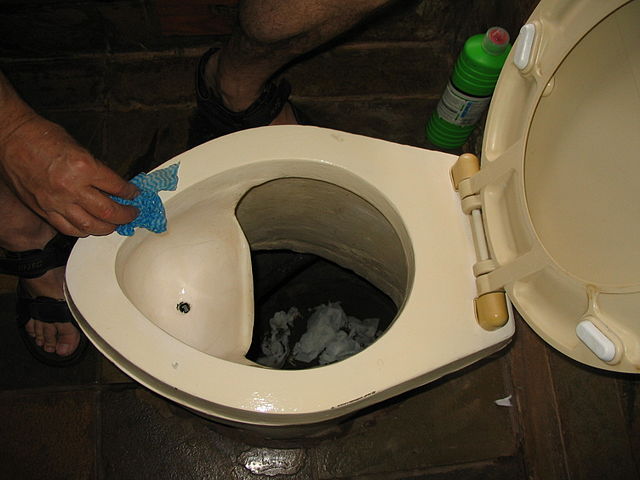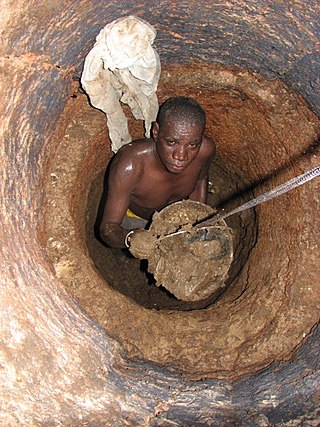toilet that operates without flush water From Wikipedia, the free encyclopedia
A dry toilet is for depositing human excrement without using water, very different from flush toilets that use water. It may be for sitting or squatting. The urine may get mixed with the feces or be kept separate.

There are different types of dry toilets: composting toilet, urine-diverting dry toilet, Arborloo, container-based toilet, bucket toilet, pit latrine, incinerating toilet, or freezing toilet.
All of these types of dry toilets work without flush water and without connections to sewers or septic tanks:[1]

Other dry toilets are being developed, some with funding from the Bill and Melinda Gates Foundation.[3]

There are four main reasons for using dry toilets:

Dry toilets can be very presentable and are used in developed countries (for example, Sweden, Finland, and Norway), where they are often found at summer houses and national parks. They are more common in developing countries in places where flush toilets are not possible or not desired. Sewers often cost too much where the land is rocky or irregular and where houses are far from one another.
Some people strongly believe that dry toilets are the best way deal with excrement, others argue that they cannot be done everywhere, and others simply do not want to change their habits. Dry toilets reduce water consumption and pollution, recover valuable nutrients for agriculture, and (when managed properly) eliminate diseases and chemicals efficiently.[4]

It has been difficult to install and manage many dry toilets in cities (for example, in the Erdos Eco-City of the Inner Mongolia Autonomous Region of China).[5] Designs need to be fine-tuned and carefully constructed and managed.[4] The users also need to learn about the benefits of dry toilets and how to properly use them.
Nearly all toilets were dry toilets, and excrement was valued in agriculture, until flush toilets were invented.
In Britain, dry toilets were still used in some areas (including cities) until the 1940s. It seems that these were often emptied directly onto gardens, where the excreta was used as fertiliser. Sewer systems did not come to some rural areas in Britain until the 1950s or later.[6]
Brisbane, Australia, was largely unsewered until the early 1970s, with many suburbs having dry toilets (called "dunnies") behind each house.

Seamless Wikipedia browsing. On steroids.
Every time you click a link to Wikipedia, Wiktionary or Wikiquote in your browser's search results, it will show the modern Wikiwand interface.
Wikiwand extension is a five stars, simple, with minimum permission required to keep your browsing private, safe and transparent.